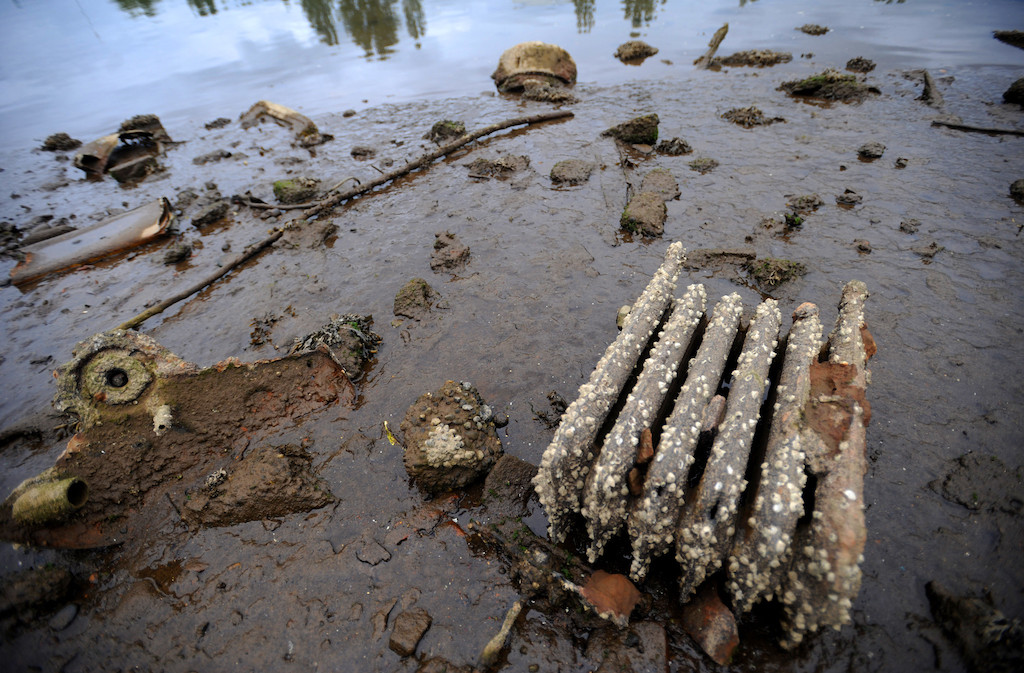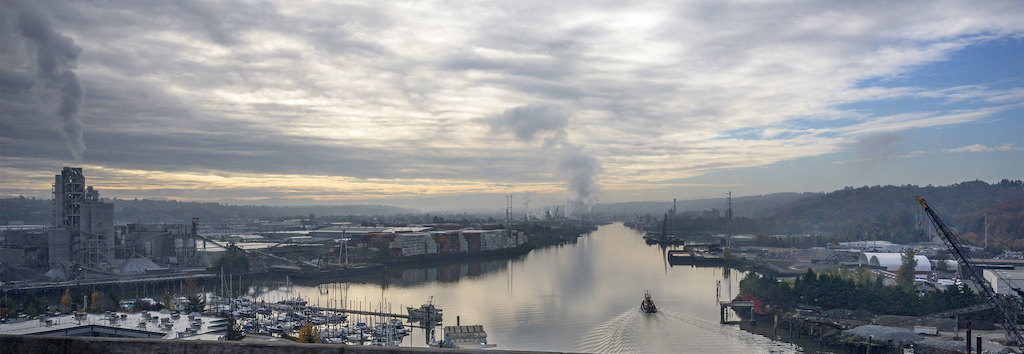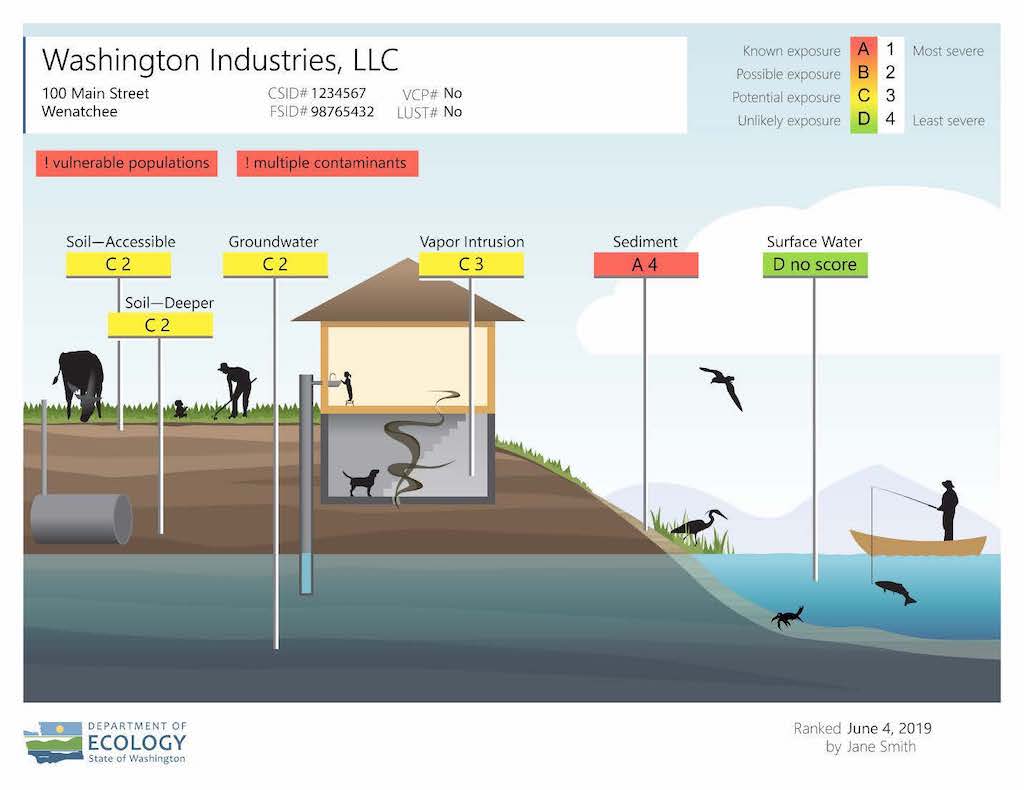In addition, the proposed system would “flag” sites located in or near “highly impacted” communities where the population is considered more vulnerable to pollution due to its racial, ethnic or demographic makeup. In its existing grant programs, Ecology uses a definition of “highly impacted” to include communities with a high proportion of people in any of these categories: low-income, people of color, less than a high school education, over age 64, under age 5, or limited in English proficiency.
That definition is being debated, and it could be revised to place more emphasis on race or income, but no decisions have been made. In response to suggestions from the advisory group, Ecology officials say a flagged community could be further described with extensive demographic details. But the key, some argue, will be how the flags ultimately influence the priority for study and cleanup of contaminated sites and whether the revised system furthers the goals of environmental justice.
Michelle Chow, stormwater and toxics policy manager for the Washington Environmental Council, serves on the Stakeholder and Tribal Advisory Group. She says she is waiting to hear how Ecology officials intend to use the flags. The alpha-numerical scores certainly help to describe the hazard, she said, but the flags will not serve environmental justice if they don’t result in more cleanups where neighbors are disproportionately affected by pollution.
For example, she explained, “We would like to ensure that the flags are used to prioritize cleanups of sites located in communities of color and lower income.”
Scott O’Dowd, cleanup policy engineer for Ecology, said staffers working on the new MTCA rules tried to figure out how to incorporate community demographics into the alpha-numerical scores. Doing so could increase the priority for sites located in highly impacted communities, he said, but the result would be a confusing mix of information about community makeup along with data about chemicals and routes of exposure.
One idea, with complications of its own, is to have a separate “equity score” to reflect community makeup and the number of sites nearby. Having another score could help people keep environmental justice in mind. But quantifying community makeup and identifying exactly who is affected by pollution are among the obstacles of this approach.
Chow and other environmental advocates maintain that it is not enough to consider only the people living in direct proximity to a site. Vulnerable populations from outside the area may be equally or even more exposed to toxic chemicals, depending on their activities. Visitors to an area can be exposed if they fish, gather shellfish or even walk on a beach where environmental hazards have not been fully identified.
Members of Puget Sound tribes in particular may be exposed to toxic chemicals in many areas when they take fish and shellfish in their “usual and accustomed areas,” as guaranteed by treaty and upheld by federal courts.
Increased focus on equity
A good start in addressing environmental justice would be to conduct a study showing the distribution of toxic sites in relation to vulnerable communities, according to a joint letter from advisory group members representing community and environmental advocates. Signers were from the Washington Environmental Council, Duwamish River Cleanup Coalition, Citizens for a Healthy (Commencement) Bay, Front & Centered, RE Sources for Sustainable Communities, Toxic-Free Future, and Zero Waste Washington.
A remaining challenge in the 30-year effort to clean up contamination involves finding the hidden sites that can still be uncovered in older, low-income neighborhoods, sometimes connected with the vestiges of racial segregation.
Chow and other advocates say Ecology officials need to make sure that vulnerable communities exposed to pollution don’t get ignored due to a lack of information about a toxic site. Often, studies come about when a developer uncovers pollution hot spots while planning to build new homes or businesses. Developers or property owners often pay for the cleanup so they can move on to construction. On the other hand, sites with less development potential may be ignored, even in places where the ongoing risk to area residents is much higher, she noted.
“Developers can jump the line by paying for cleanups that have lower hazards,” Chow said. “They will go to those places where they can get the most money. That’s often the more affluent neighborhoods.”
Ecology officials acknowledge that when a developer pays the state agency to review cleanup plans, the site may be given a higher priority for cleanup than it would have received otherwise. The goal, after all, has been to get the most sites cleaned up as quickly as possible within the existing MTCA budget. Community and environmental advocates argue that this traditional approach needs to be reconsidered in favor of a system that focuses more on the people actually affected by contamination.
“We understand that funding is a major factor for how quickly and effectively sites can be cleaned up,” states the joint letter to Ecology. “However, we are again concerned that relying on this factor will only continue the trend of focusing cleanup dollars in white, affluent communities, rather than in low-income communities or communities of color, who bear a disproportionate burden of the impacts from contaminated sites.”
Communities already overburdened with health problems should not be forced to keep enduring the effects of one or more toxic sites that area residents neither created nor supported in any way, Chow said.
One suggestion is to develop a system that recognizes when a contaminated site is “data poor.” Information would then be collected so that hazards at all sites could be examined with at least a minimum of baseline data, the advocates said. Furthermore, to better protect the health of a community, priority for cleanup should be given to a site in close proximity to other sites, all other things being equal.
Meanwhile, new toxic sites are being discovered all the time. Problems are frequently traced back to forgotten businesses, such as gas stations, machine shops, dry cleaners and printers. A remaining challenge in the 30-year effort to clean up contamination involves finding the hidden sites that can still be uncovered in older, low-income neighborhoods, sometimes connected with the vestiges of racial segregation.
Moving toward cleanup
When considering funding for cleanup projects, current MTCA rules require Ecology to consider whether a site is “located within a highly impacted community,” while also examining threats to human health and the environment plus the potential for future development. Ecology plans to broaden the rule to consider whether a site “affects a highly impacted community,” thus taking into account past and future uses of the property by people who may or may not live nearby.
During investigations into the nature and extent of pollution, the planners who conduct the studies have always been required to consider alternative ways to effectively clean up a site. Cleanup standards — the levels of various contaminants allowed to remain on site — have largely focused on future uses of a property, with somewhat higher contaminant levels allowed for business and industry and lower levels for residential housing.
In setting standards for a given site, one proposal put forth by Ecology is to take into account how a highly impacted community may be disproportionately affected by exposure to chemicals on the site. For example, some ethnic groups eat more fish than the general population. People in older homes tend to be exposed to higher levels of indoor air pollution on top of pollution from outside. Noise and overcrowding as well as housing and school conditions can increase stress, often exacerbated by environmental conditions, with harmful health effects.
As a matter of environmental justice, cleanup standards and the cleanup process itself could be required to focus on reducing exposures that cause adverse health effects for vulnerable communities.
Some members of the advisory group would like to see new rules that would require owners of property on the state’s contaminated sites list to provide information about the site to people who are living or working there.
The proposed rule requires that a site-specific feasibility study contain environmental justice considerations, including “the degree to which the benefits and burdens of the preferred cleanup action alternative are equitably distributed.” Health, social, cultural and economic burdens are to be examined.
The process of updating the MTCA rules provides an opportunity to improve communications with people affected by contaminated sites, according to Millie Piazza, environmental justice senior adviser for the Department of Ecology. Since every community is different, it could take in-depth discussions to understand how people are exposed to contamination in or near their communities.
Special efforts may be needed to help people understand the technical issues related to a site and be involved in cleanup decisions, Piazza said. MTCA funds can be used for “public participation grants,” providing financial support for community members to gather information and work together.
“Public engagement is huge,” Piazza said. “How can we get to appropriate decisions unless people are part of the process. That being said, there are many reasons why people might not be able to be involved.”
Language barriers, work obligations, childcare and many more issues provide challenges, especially for low-income populations and immigrant families. The challenge for Ecology is to work with people and overcome those barriers to get to a meaningful dialog.
“Can we translate a thousand-page technical report into Spanish, or can we tell people what it means?” Piazza asked. “How can we, as an agency, make sure that the (cleanup) decisions are right? We need to understand the nuances and explain what the data are really saying.”





